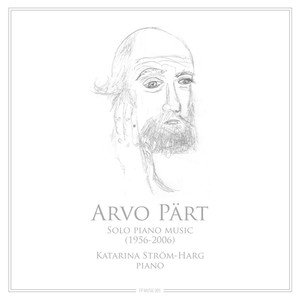
- 歌曲
- 时长
-
作曲家:Arvo Pärt
-
作品集:Vier Leichte Tanzstücke Für Klavier
-
作品集:Sonatine Op. 1 No. 1
-
作品集:Partita Op. 2
-
作品集:Sonatine Op. 1 No. 2
-
作品集:Sonatine, Op. 1, No. 2
-
作品集:Diagramme, Op. 11
-
作曲家:Arvo Pärt( 阿尔沃·帕尔特)
-
作品集:Für Alina
-
作曲家:Arvo Pärt( 阿尔沃·帕尔特)
-
作品集:Für Anna-Maria
简介
About the works for piano and Arvo Pärt. I see a clear line running through all his pianopieces. The language of the composer shows a clear dualism. Examples are: Authority-subjects, Red Riding Hood- the Wolf, character-sonority, dreamy-drama, worry-tranquility and clean polyphonic of two voices. This CD includes Arvo Pärt's complete solo piano works published between 1956-2006. Arvo Pärt b. 1935 in Paid, Estonia. As a child he played the piano and started early to compose small pieces for the piano. 4 Leichte Tanzstücke für Klavier (1956/57) the first pieces to be published. Colourful character pieces, with influences of Prokofiev and Sjostakovtij. Sonatina Op.1 No.1 (1958): Movement 1 is a virtuosic piece. Movement 2 is meditative, dreamlike and sonorous with a touch of drama. The piece ends with a short virtuosic coda. Partita Op.2 (1959): 4 parts in a neoclassical style: Toccatina: Portato notes furiously walking across the keyboard. Fughetta: Two voices in a rebellious dialogue. Larghetto: A mixture of sound, beauty and drama. Ostinato: The theme in the bass moves independently of the right hand, interrupted by a short cadenca in a similar structure. Though more developed the ostinato returns and the piece explodes in howling abyss. Sonatina Op.1 No.2 (1959): Movement 1 begins with a intense rhythmic motif. Movement 2 connects in a dark meditative mood. Movement 3 interrupts with a repetitive motif with an inherent menace. A brief dreamy cadence leads over to the opening scene and gives the sonatina a temperamental ending. Diagramme Op.11 (1964): This piece challenges the interpreter to own creativity. This is an experimental work in two parts: 1. Unruh: The music is printed in different-sized circles. The performer chooses rythmes and nuances. It ends with a 12-ton cluster. 2. Ruhig: The music is written in four clefs in order to clarify a sense of polypfony. "Für Alina" (1977) : During a period of 8 years Arvo Pärt was "silent" during this time he was searching for a deeper spiritual and musical truth, he also studied Gregorian chant and music for English church bells. During these years, a new style developed, which he calls ”tintinnabuli” (from Latin: sound of small bells). Für Alina was the first work in this style and it was his comeback and breakthrough on the musical stage. It is loved all over the world. "Für Arinushkas Gesundung" (1978) Variations: Is an evocative description of a healing process. The first part is meditative and in a minor key and proceeds calmly, as the piece turns into a major key it transforms into another dimension. "Für Anna-Maria" (2006): Composed for a 10-year-old girl. The piece is played in two characters according to the composer's instructions: 1. Nachdenklich and 2. Fröhlich ©2011 Katarina Ström-Harg Katarina Ström-Harg is a well established pianist in the Swedish music scene and performs in countries such as: The US, UK, France, Croatia, Denmark, Spain among others. As a soloist she has played concerts with many orchestras, such as the Royal Philharmonic Orchestra in Stockholm and Norrköping Symphony Orchestra. She collaborates with many renowned artists, singers as well as instrumentalists. Since 1988 she plays in a duo with clarinetist Stefan Harg. Katarina is also a performer of Historic piano and a member of Ensemble Crusell, Stockholm. Her repertoire ranges from baroque to contemporary music. She has received special acclaimes for her interpretations of Bach, Beethoven and Mozart which she combines with contemporary music, with particular emphasis on neglected women composers from 1870 to the present. Katarina runs various projects as an entrepreneur and is an innovator by presenting live music in different environments, using her worldwide network of contacts. She is a tenure professor of interpretation at the Royal College of Music in Stockholm. Her educational work includes an active music making with students at all levels. Within the framework of RCM/ KMH she has an ongoing research project. She presents workshops on the topic of "Ergonomic piano playing" to share her knowledge of the natural way of the art of pianoplaying.







